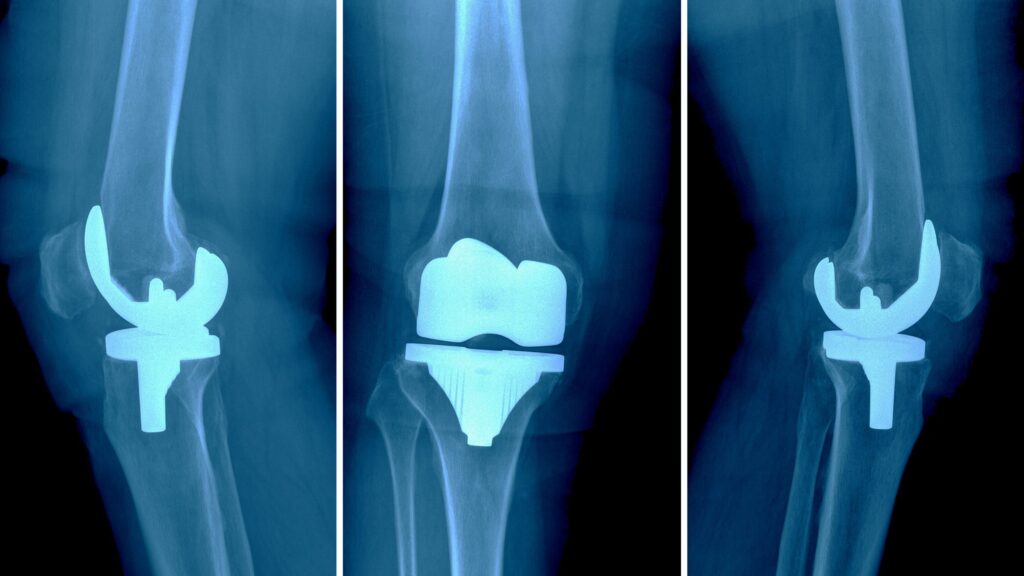Femur rod surgery, also called intramedullary nailing, is a common procedure used to treat fractures of the femur (thigh bone). A metal rod is inserted into the hollow part of the femur to stabilize the bone and allow proper healing. While this surgery is effective for fracture recovery, many patients experience knee pain during the healing process.
Why does this happen? The femur is directly connected to the knee joint, so any surgical intervention involving the femur can affect the knee’s movement, function, and comfort. Some people experience mild discomfort, while others may have sharp, persistent pain that affects mobility and daily activities.
Understanding the causes, symptoms, and best treatment options for knee pain after femur rod surgery can help you manage recovery effectively.
Why Does Knee Pain Occur After Femur Rod Surgery?

Knee pain after surgery can be caused by several factors, including surgical impact, inflammation, muscle weakness, and post-operative changes.
1. Surgical Trauma & Inflammation
- During femur rod surgery, the knee is often used as an entry point for inserting the rod. This can cause temporary trauma to the surrounding muscles, ligaments, and tendons, leading to pain and swelling.
- Post-surgical inflammation is common and may last for weeks or months, contributing to knee stiffness.
2. Quadriceps Weakness & Muscle Atrophy
- The quadriceps muscles (front thigh muscles) play a crucial role in knee stability. Surgery can weaken these muscles, making the knee feel unstable or painful during movement.
- Muscle atrophy (loss of muscle mass) can occur due to reduced activity post-surgery. This weakens knee support and increases discomfort.
3. Scar Tissue Formation
- Excessive scar tissue around the knee can restrict movement, leading to pain and stiffness.
- If not addressed through physical therapy, scar tissue buildup may cause long-term knee discomfort.
4. Hardware Irritation (Rod or Screws Causing Pain)
- In some cases, the metal rod or screws used to fix the femur may cause irritation around the knee.
- If pain persists beyond the normal recovery period, hardware removal surgery may be considered.
5. Improper Walking Pattern & Gait Changes
- After surgery, people tend to change how they walk to compensate for weakness or discomfort.
- Incorrect gait patterns put extra stress on the knee joint, leading to pain and further complications.
6. Nerve Sensitivity or Damage
- Some patients experience nerve pain due to irritation or minor nerve damage during surgery.
- This can cause sharp, burning, or tingling pain around the knee and leg.
Common Symptoms of Knee Pain After Femur Rod Surgery
Knee pain after surgery can vary in intensity and duration, depending on individual healing and the underlying cause.
Dull, aching pain in the front or side of the knee
Sharp pain while bending or walking
Swelling and stiffness around the knee joint
Difficulty straightening or bending the knee fully
Clicking, popping, or grinding sensations in the knee
Increased pain with prolonged standing or walking
Instability or weakness in the knee when bearing weight
If pain worsens over time or affects daily activities, consult your doctor for further evaluation.
How Long Does Knee Pain Last After Surgery?
Recovery time varies based on the severity of the fracture, the type of surgery, and individual healing.
First 2–6 Weeks – Swelling and moderate pain are expected. Mobility is limited.
6–12 Weeks – Pain gradually reduces, but stiffness and muscle weakness may persist.
3–6 Months – Most people regain significant mobility, but some discomfort may remain.
6–12 Months – Full recovery, with minimal or no knee pain in most cases.
When to Be Concerned:
- If knee pain persists beyond 12 months or worsens over time, it may indicate an underlying issue (such as hardware irritation, scar tissue, or improper healing).
Best Ways to Relieve Knee Pain After Femur Rod Surgery
1. Physical Therapy & Strengthening Exercises
Rehabilitation is essential to regain strength, improve mobility, and reduce pain.
✔ Quadriceps Strengthening – Leg raises, step-ups, and wall sits improve knee support.
✔ Range of Motion Exercises – Gentle knee bends and stretches prevent stiffness.
✔ Low-Impact Activities – Swimming and cycling strengthen the knee with minimal stress.
Also Read: Knee Pain When Walking Down Stairs – Causes & Effective Relief!
2. Manage Pain with Ice & Heat Therapy
✔ Ice packs (15–20 minutes, several times a day) help reduce swelling and numb pain.
✔ Heat therapy (warm compress or heating pad) relaxes stiff muscles and improves circulation.
3. Use Knee Braces or Compression Sleeves
✔ A knee brace stabilizes the joint and reduces strain.
✔ Compression sleeves help reduce swelling and improve blood circulation.
4. Pain Management Medications
✔ NSAIDs (Ibuprofen, Naproxen) – Reduce pain and inflammation.
✔ Pain-relief creams or gels – Provide localized comfort.
✔ Doctor-prescribed pain medication – For severe cases, under medical supervision.
5. Improve Walking Posture & Gait Training
✔ Use crutches or a cane initially to reduce pressure on the knee.
✔ Engage in gait training with a physical therapist to correct walking patterns.
6. Massage & Myofascial Release Therapy
✔ Gentle knee massages can improve circulation and reduce stiffness.
✔ Foam rolling the quadriceps can relieve muscle tightness affecting the knee.
7. Consider Hardware Removal (If Necessary)
✔ If knee pain persists after 12 months, it may be due to hardware irritation.
✔ In some cases, doctors recommend rod or screw removal surgery to relieve discomfort.
When to See a Doctor
Seek medical help if you experience:
Severe or worsening knee pain despite treatment.
Swelling, redness, or warmth around the knee (possible infection).
Difficulty bearing weight or instability in the knee.
Numbness, tingling, or sharp shooting pains.
FAQ’s
1. Is knee pain normal after femur rod surgery?
Yes, mild to moderate knee pain is common after femur rod surgery due to surgical trauma, inflammation, and muscle weakness. It usually improves with time, rehabilitation, and pain management strategies.
2. How long does knee pain last after surgery?
Knee pain typically improves within 3–6 months, but some discomfort may persist for up to a year. If pain worsens or continues beyond 12 months, consult your doctor for further evaluation.
3. What are the best ways to reduce knee pain during recovery?
Physical therapy, quadriceps strengthening exercises, ice/heat therapy, knee braces, and pain relievers can help manage discomfort. Proper gait training and massage therapy may also aid recovery.
4. Why does my knee feel weak or unstable after surgery?
Weak quadriceps muscles, scar tissue, and changes in walking patterns can cause knee instability. Strengthening exercises and guided rehabilitation with a physical therapist can help restore knee stability.
5. When should I see a doctor about knee pain after surgery?
Seek medical attention if you experience severe pain, swelling, redness, warmth around the knee, difficulty bearing weight, or persistent pain beyond a year, as these may indicate complications like hardware irritation or improper healing.
Final Thoughts
Knee pain after femur rod surgery is a common part of the recovery process, but with proper care, rehabilitation, and medical guidance, most patients can regain full function over time. While some mild to moderate discomfort is expected, it should gradually improve as healing progresses. Physical therapy and strengthening exercises play a crucial role in restoring knee stability and mobility. Additionally, ice and heat therapy, knee braces, and pain relievers can help manage post-surgical discomfort. However, if pain persists or worsens, it’s important to consult a doctor for further evaluation.
Related Post
- Zimatejigemo – Unlocking the Fusion of Creativity, Identity, and Innovation!
- Tinaypimatelate – The Revolutionary Concept Shaping the Future of Innovation!
- Limhuloxidpov – A Complete Guide to Understanding This Unique Concept!
- Zaxtexporoz – Exploring the Emerging Concept of Innovation and Digital Transformation!
- Lekulent – The Breakthrough Wellness Solution Taking the Health World by Storm!






